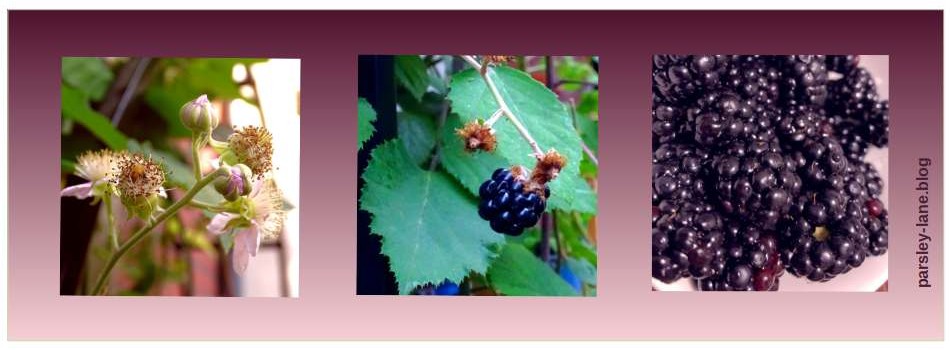Black Pearls
Introduction to the dark spheres of Berlin (Ingredient Special on Blackberries)
Blackberries are a fascinating fruit. Like their cousin the blueberry, they are rightly considered a local superfood wherever they grow, and there has been a lot of research in recent years to confirm their antioxidant and therefore anti-inflammatory properties. Which is very good, because inflammation is responsible for many chronic diseases and “aging” processes.
The berries themselves have retained an image of being wild in the best sense of the word, although there have been a few tamed new varieties and hybrids. You may be familiar with the loganberry (a cross between a raspberry and a blackberry) or the boysenberry (a cross between a loganberry and a blackberry).
Wild blackberries tend to grow near riverbanks or other places where they can keep their roots cool and not too dry. The thorns that made it necessary for me as a child to wear long sleeves, long pants, and sturdy shoes in the hot summer if I wanted to eat the blackberry jam my mother used to make are optional these days. Our blackberry bush, which shares a room (slash rosebow) with the large vine plant on the balcony, has no thorns. It still has a mind of its own about where it wants to grow, and I respect that. That is another characteristic of this plant and kind of hints at its cousins, the roses. They are also a very proud and special bunch.
Cooking with blackberries is not something I would normally do – with the exception of today’s special ingredient recipe ‘Berlin Nights’. But I love to eat them fresh with all kinds of salty or spicy foods. Cheese is an excellent example, as is anything barbecued or ‘meatball’ style (see the Bear’s Garlic Ingredient Special recipe from this year’s Spring edition).
Since Berlin is a remarkably green city – it just passed the Deutsche Umwelthilfe’s (Environmental Action Germany) heat stress test – you will notice that much of the green consists of blackberries, which grow in the summer and still cover the ground in the winter, providing shelter for birds, hetchhaws, and other wildlife.
Blackberries, then, are true Berliners, carrying on some of the best traditions of the city since the first people settled here. Or maybe even a little longer.
The berries themselves have retained an image of being wild in the best sense of the word …
Side Notes
- The earliest evidence of blackberry growth was found 2500 years ago, but it is believed to have appeared much earlier. The great Greek poet Aeschylus and the famous physician Hippocrates both mentioned it in their writings, and even Da Vinci drew a blackberry branch. Blackberries arrived in Europe during the Middle Ages and have been used as a natural remedy ever since (many uses are thoroughly documented).
- As usual, there is a recipe to go along with this Ingredient Special on Blackberries. Only this time I made it into an extra post ([‘Berlin Nights’]).
